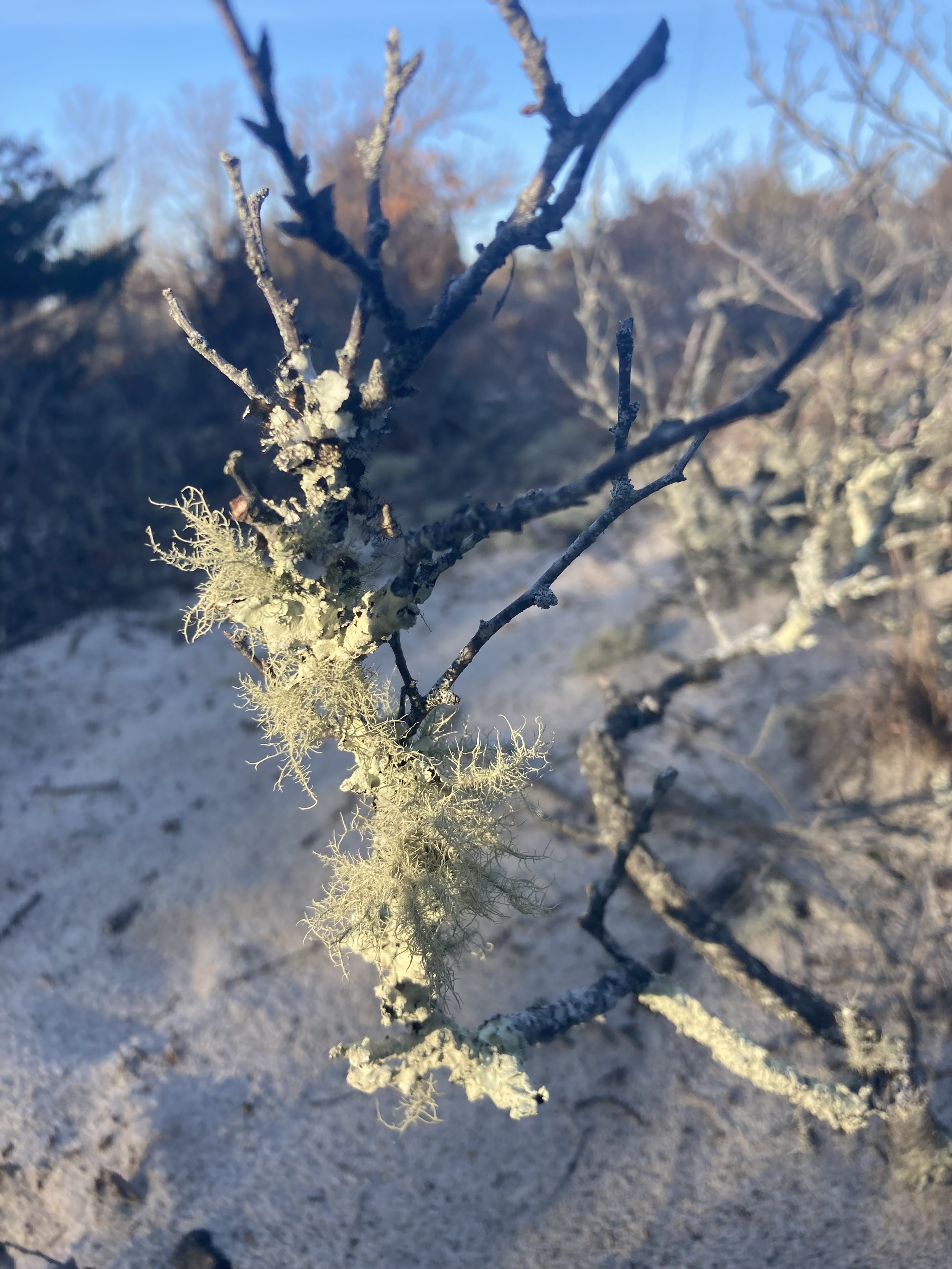First, Buddy joins in the exploration…..
These fallen look promising….
Found a nice piece of maple , now let’s see what we get.
A lot of work but, looks great with lots of character - now for the legs…..
,From the town Recycling yard, I found some slender iron rods and when formed and welded, should fit nicely.
It has became more graceful , buffed and polished, it reflects light nicely as well….
What is it all about?
What are these natural things we find interesting during a nature walk? Things we may take for granted? Things we want to know more about, but frequently just pass by? Things we truly find a curiosity for?
I am still learning to be amazed during such walks and hopefully so are you! I would like to pass on some observational notes that reflect on the work I have presented.
LICHENS
Think about this- They have been launched into space and once their capsule were opened, exposed to the vacuum of deep space with its wide fluctuations of temperatures and cosmic radiation. After a long period, returned to earth and found to have been unchanged, still maintaining their ability to photosynthesize and grow.
They are not parasites living off plants , but a unique independent miniature ecosystem, living on almost any surface- rock walls, roofs, gravestones, Arctic tundra, dry desert, toxic slag heaps and even inside rocks!
One of earths oldest living organism.
They are a wonderful phenomenon and when I find them, I love to incorporate them into my work.
Just spray a little water once and awhile and your piece will rebound with a robust lichen offering.
BARK
When you see a tree what do you see?
Answer- a tree
But it is more than that.
Every season a tree”s girth is expanding- all the action is within a thin layer of growth that provides the tree with the necessary “ plumbing” to feed itself. Thus, the tree needs to make way for a new layer every season to continue the process. The result is continuation of “rings” .
Each ring is a representation of the last season’s growth environment. Hence, they can help us interpret the age of a tree and the environmental condition. Meanwhile, the tree is expanding its girth and like fitting into tight jeans, something has to give.
In a tree’s case- as it matures (not all species) the result are bursting open into a variety of textured shapes and thicknesses that form the “ outer bark”. The older the tree the more pronounced this effect is.
Those fissures, furrows and scales etc. are unique to each species, I seek them out and try to present them in a form that maintains their natural integrity.







